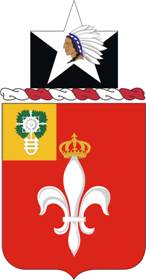
The 52nd Air Defense Artillery Regiment is an air defense artillery regiment of the United States Army first organized in 1917 as a railway gun unit. It continued in that role unit 1943, when the regiment was broken in separate railway gun battalions, and in the following year the units were reorganized and redesignated as field artillery.

The 7th Air Defense Artillery Regiment is an air defense artillery regiment of the United States Army, first constituted in the Regular Army as the 7th Regiment of Artillery on 8 March 1898. The 6th and 7th U.S. Artillery Regiments were constituted on 8 March 1898, three weeks after the explosion of USS Maine in Havana, Cuba on 15 February 1898, as the United States' declaration of war on Spain and commencement of the Spanish–American War seemed imminent.

The 6th Field Artillery Regiment is a Field Artillery Branch regiment of the United States Army first activated in 1907 from numbered companies of artillery. It was first organized with two battalions.
The 9th Field Artillery Regiment is a field artillery regiment of the United States Army first formed in 1916. The regiment served in Hawaii during World War I, 3rd, 4th, 7th, and 9th Divisions between the world wars, and with 3rd Infantry Division during World War II and Korea. Since 1957, the regiment has been a parent regiment under the Combat Arms Regimental System and the U.S. Army Regimental System, with regimental elements serving with the 3rd, 4th, 10th, 25th, 79th, 83rd, and 96th Infantry Divisions and various field artillery brigades and groups. The regiment's single active component, the 1st Battalion, 9th Field Artillery Regiment, is assigned to the 2nd Brigade Combat Team, 3rd Infantry Division and stationed at Fort Stewart, Georgia.
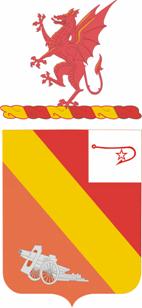
The 13th Field Artillery Regiment is a field artillery regiment of the United States Army first formed in 1916.

The 15th Field Artillery Regiment (FAR) is a field artillery regiment of the United States Army first formed in 1916. A parent regiment under the U.S. Army Regimental System, the 15th FAR currently has two active battalions: the 1st Battalion, 15th Field Artillery Regiment, is assigned to the 1st Brigade Combat Team, 2nd Infantry Division, while the 2nd Battalion, 15th Field Artillery Regiment, is assigned to the 2nd Brigade Combat Team, 10th Mountain Division.
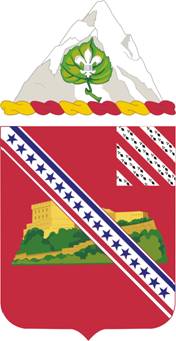
The 17th Field Artillery Regiment is a field artillery regiment of the United States Army first formed in 1916.

The 21st Field Artillery Regiment is a field artillery regiment of the United States Army first formed in 1916. A parent regiment under the U.S. Army Regimental System, all components of the regiment are currently inactive. The 1st Battalion 21st Field Artillery Regiment, the regiment's final active component, deactivated on June 12, 2014.

The 25th Field Artillery Regiment is a field artillery regiment of the United States Army, first constituted 5 July 1918 in the National Army (USA). Although the regiment did not see action during World War I, elements participated in World War II, Vietnam, Panama, the Gulf War, and the Global War on Terrorism. Currently the regiment one active battalion, a towed light artillery units equipped with the M119A3 105mm Howitzer and the M777A2 155mm Howitzer. The 5th Battalion is assigned to the 3rd Brigade Combat Team, 10th Mountain Division at Fort Polk, Louisiana. The 4th Battalion was inactivated on 14 August 2014.
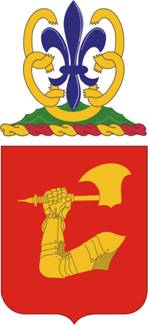
The 40th Field Artillery Regiment is a field artillery regiment of the United States Army, first Constituted 5 July 1918 in the National Army (USA).

The 77th Field Artillery Regiment is a field artillery regiment of the United States Army. First constituted 1916 in the Regular Army as a cavalry regiment. Reorganized in 1917 as field artillery and given its current designation.
The 79th Field Artillery Regiment is a field artillery regiment of the United States Army. First constituted 1916 in the Regular Army.

The 43rd Air Defense Artillery Regiment is an air defense artillery regiment of the United States Army first constituted 1918 in the Regular Army.
The 1st Battalion, 79th Field Artillery is the only active duty element remaining of the 79th Field Artillery. First constituted on 1 July 1916 in the Regular Army as Troops A (Alpha) and B (Bravo) in the 21st Cavalry, their mission has changed greatly from their Cavalry days. The 1st Battalion, 79th Field Artillery is part of the 434th Field Artillery Brigade charged with the TRADOC mission of Basic Combat Training or BCT of new soldiers to the United States Army.

The 300th Field Artillery Regiment is a Field Artillery regiment of the United States Army.
The 377th Field Artillery Regiment is a field artillery regiment of the United States Army. A parent regiment under the U.S. Army Regimental System, the regiment's 2nd Battalion, 377th Field Artillery Regiment is assigned to the 2nd Infantry Brigade Combat Team (Airborne), 11th Airborne Division. Elements of the regiment have also served with the 101st Airborne Division and 82nd Airborne Division, and have seen service in World War II, Vietnam, and in both Iraq and Afghanistan during the Global War on Terror. The 1st and 3rd Battalions as well as Batteries D and E are Inactive.
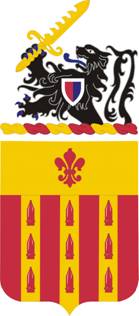
The 333rd Field Artillery Regiment is a regiment of the Field Artillery Branch of the United States Army.

The 6th Air Defense Artillery Regiment is an air defense artillery regiment in the United States Army, first formed in 1898 as the 6th Regiment of Artillery. The 6th and 7th U.S. Artillery Regiments were constituted on 8 March 1898, three weeks after the explosion of the USS Maine in Havana, Cuba on 15 February 1898, as the United States' declaration of war on Spain and commencement of the Spanish–American War seemed imminent.
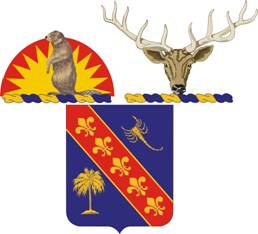
The 148th Field Artillery Regiment is a Field Artillery Branch regiment of the Army National Guard.
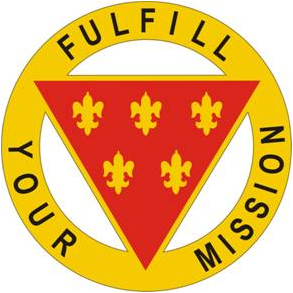
The 3rd Infantry Division Artillery (DIVARTY) is the divisional artillery command for the 3rd Infantry Division at Fort Stewart, Georgia. The DIVARTY has served with the division in World Wars I and II, the Korean War, Operation Iraqi Freedom, and in peacetime at Fort Stewart and Germany. The DIVARTY was inactivated in 2004 as part of transformation to modular brigade combat teams, but was reactivated on 17 October 2014 to provide fire support coordination and mission command for the training and readiness of Field Artillery units across the division.
